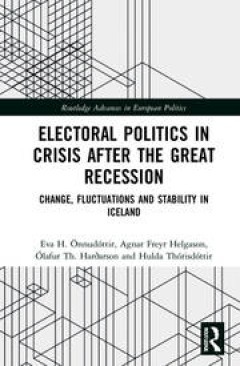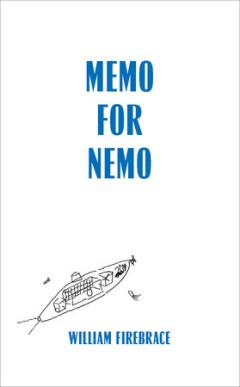Filter by

Tower to Tower: Gigantism in Architecture and Digital Culture
- Edition
- -
- ISBN/ISSN
- 9780262358330
- Collation
- -
- Series Title
- -
- Call Number
- -
- Edition
- -
- ISBN/ISSN
- 9780262358330
- Collation
- -
- Series Title
- -
- Call Number
- -

In the Images of Development: City Design in the Global South
The urban legacy of the Global South since the colonial era and how sustainable development and environmental and social justice can be achieved. Remarkably little of the expansive literature on development and globalization considers actual urban form and the physical design of cities as outcomes of these phenomena. The development that has shaped historic transformations in urban form and …
- Edition
- -
- ISBN/ISSN
- 9780262361118
- Collation
- -
- Series Title
- -
- Call Number
- -

Paris and the Parasite: Noise, Health, and Politics in the Media City
The social consequences of anti-parasitic urbanism, as efforts to expunge noise and biological parasites penalize those viewed as social parasites. According to French philosopher Michel Serres, ordered systems are founded on the pathologization of parasites, which can never be fully expelled. In Paris and the Parasite, Macs Smith extends Serres's approach to Paris as a mediatic city, asking…
- Edition
- -
- ISBN/ISSN
- 9780262363068
- Collation
- -
- Series Title
- -
- Call Number
- -

Form and Flow: The Spatial Politics of Urban Resilience and Climate Justice
An examination of urban climate change response strategies and the resistance to them by grassroots activists and social movements. Cities around the world are formulating plans to respond to climate change and adapt to its impact. Often, marginalized urban residents resist these plans, offering “counterplans” to protest unjust and exclusionary actions. In this book, Kian Goh examines cl…
- Edition
- -
- ISBN/ISSN
- 9780262367066
- Collation
- -
- Series Title
- -
- Call Number
- -

Laboratory Lifestyles: The Construction of Scientific Fictions
A generously illustrated examination of the boom in luxurious, resort-style scientific laboratories and how this affects scientists' work. The past decade has seen an extraordinary laboratory-building boom. This new crop of laboratories features spectacular architecture and resort-like amenities. The buildings sprawl luxuriously on verdant campuses or sit sleekly in expensive urban neighborhoo…
- Edition
- -
- ISBN/ISSN
- 9780262349741
- Collation
- -
- Series Title
- -
- Call Number
- -

Dream City: Creation, Destruction, and Reinvention in Downtown Detroit
Tracing two centuries of rise, fall, and rebirth in the heart of downtown Detroit. Downtown Detroit is in the midst of an astonishing rebirth. Its sidewalks have become a dreamland for an aspiring creative class, filled with shoppers, office workers, and restaurant-goers. Cranes dot the skyline, replacing the wrecking balls seen there only a few years ago. But venture a few blocks in any direc…
- Edition
- -
- ISBN/ISSN
- 9780262351218
- Collation
- -
- Series Title
- -
- Call Number
- -

LabOratory: Speaking of Science and Its Architecture
An illustrated examination of laboratory architecture and the work that it does to engage the public, recruit scientists, and attract funding. The laboratory building is as significant to the twenty-first century as the cathedral was to the thirteenth and fourteenth centuries. The contemporary science laboratory is built at the grand scales of cathedrals and constitutes as significant an arc…
- Edition
- -
- ISBN/ISSN
- 9780262356350
- Collation
- -
- Series Title
- -
- Call Number
- -

Electoral Politics in Crisis After the Great Recession
ABSTRACT This book examines to what extent politics in Iceland have been transformed in the aftermath of the 2008 financial crisis. The book focuses on whether the short-term sudden shock caused by the Great Recession has permanently transformed politics, political behaviour and the Icelandic party system or whether its effect was primarily transitory. These questions remain highly relevant…
- Edition
- -
- ISBN/ISSN
- 9780429436345
- Collation
- -
- Series Title
- -
- Call Number
- -

Memo for Nemo
A cultural history of living in the undersea, both fictional and real, from Jules Verne's Captain Nemo to NASA's ECC02 project. In Memo for Nemo, William Firebrace investigates human inhabitation of the undersea, both fictional and real. Beginning with Jules Verne's Captain Nemo—an undersea Renaissance man with a library of 12,000 volumes on his submarine—and proceeding through aquariums…
- Edition
- -
- ISBN/ISSN
- 9780262370486
- Collation
- -
- Series Title
- -
- Call Number
- -

Marseille Mix
A journey through the history, cultures, and societies of Marseille. There are many Marseilles, or at least many versions of Marseille: seaside village, haven of gangsters, gateway to the East, city of immigrants and outcasts. It is by turns the dull bourgeois provincial town where nothing ever happens and the mysterious unknowable city of the Mediterranean. In Marseille Mix, William Firebra…
- Edition
- -
- ISBN/ISSN
- 9780262370462
- Collation
- -
- Series Title
- -
- Call Number
- -
 Computer Science, Information & General Works
Computer Science, Information & General Works  Philosophy & Psychology
Philosophy & Psychology  Religion
Religion  Social Sciences
Social Sciences  Language
Language  Pure Science
Pure Science  Applied Sciences
Applied Sciences  Art & Recreation
Art & Recreation  Literature
Literature  History & Geography
History & Geography